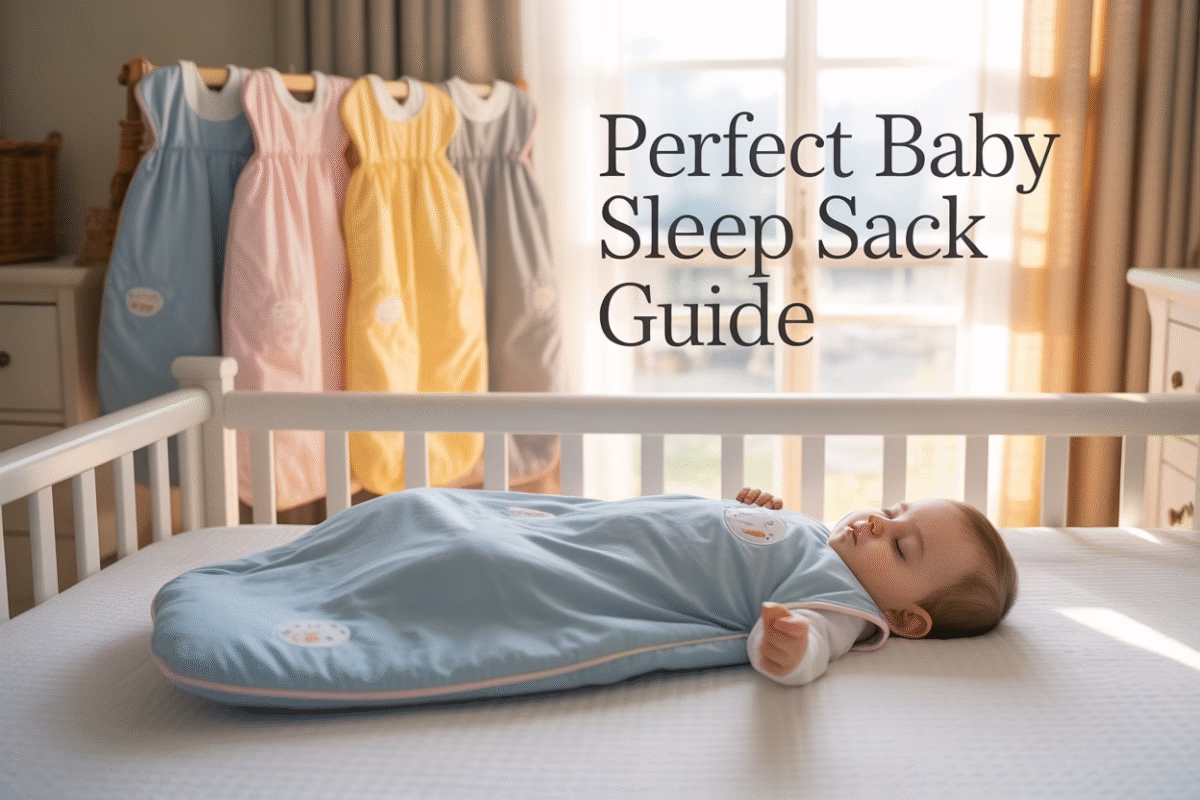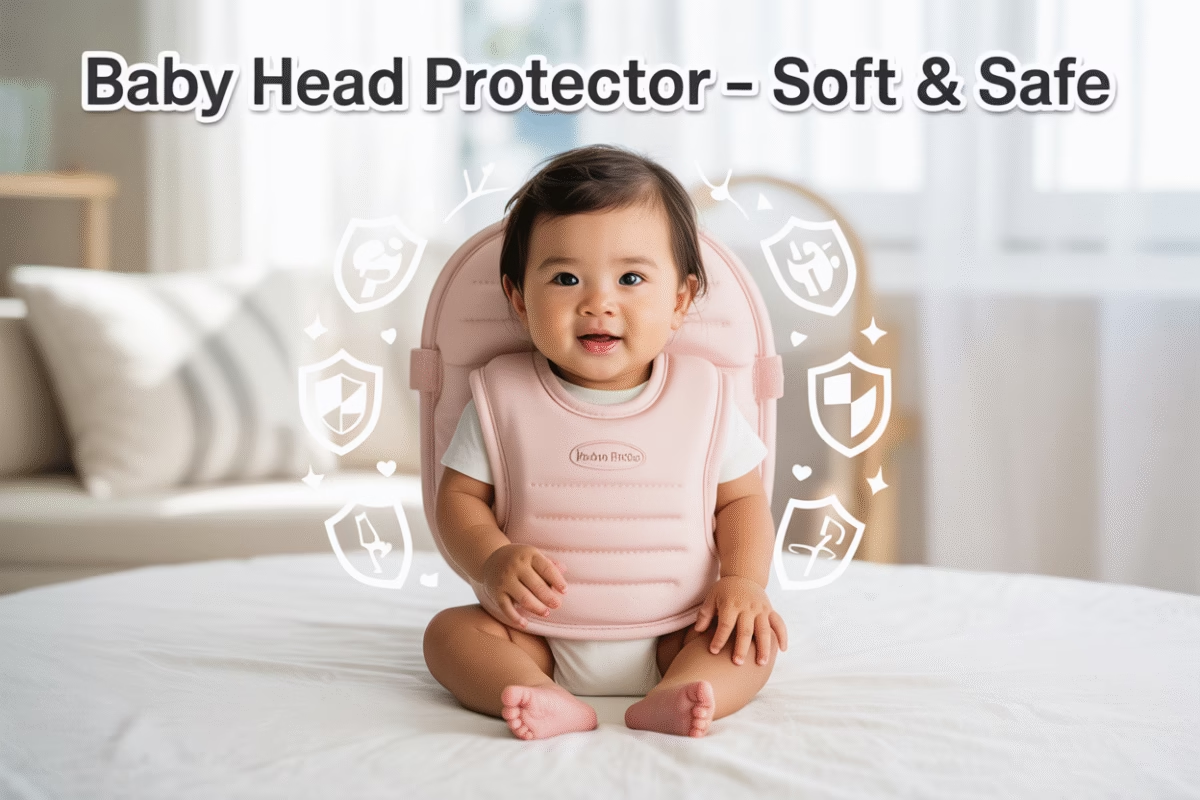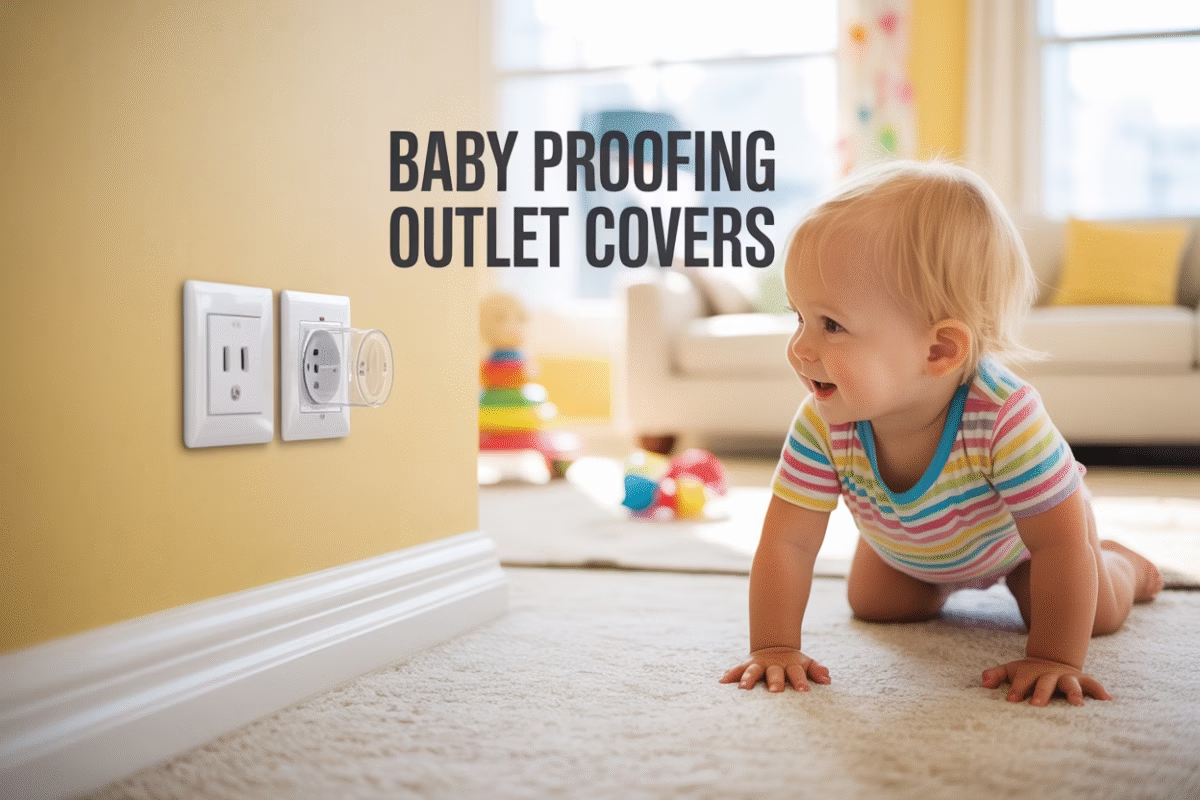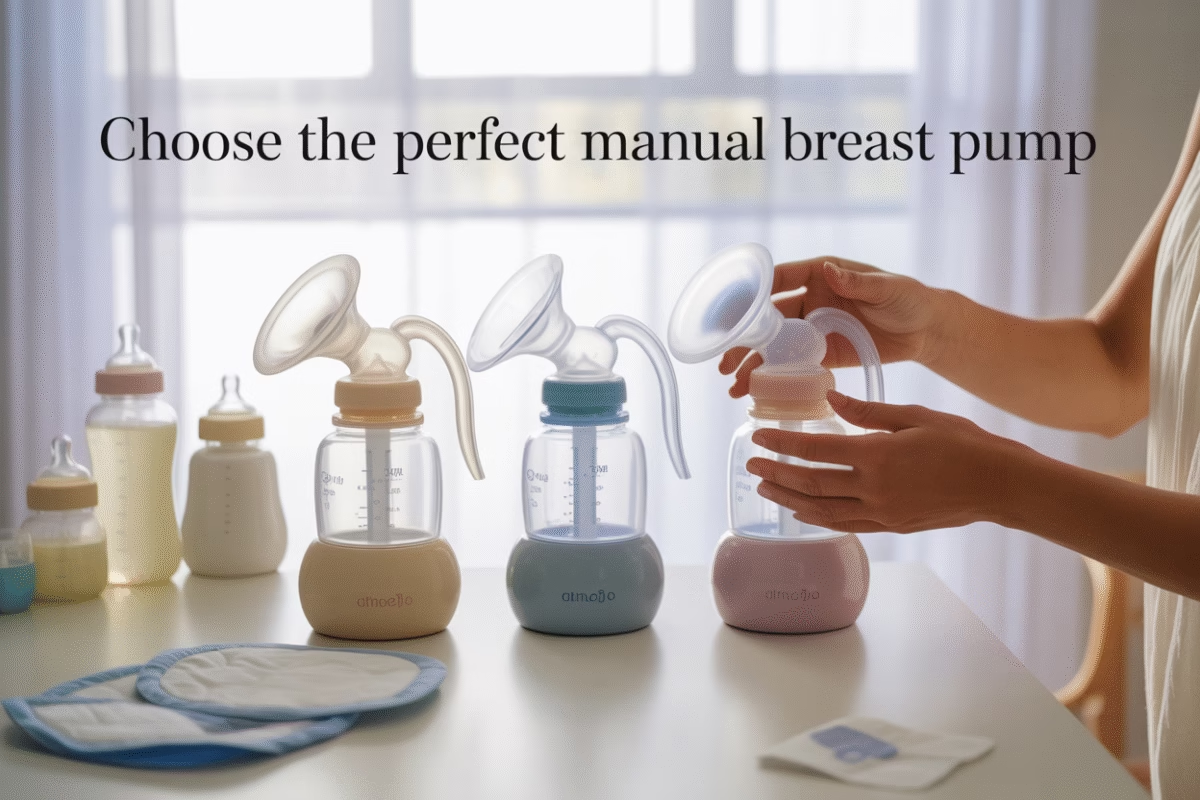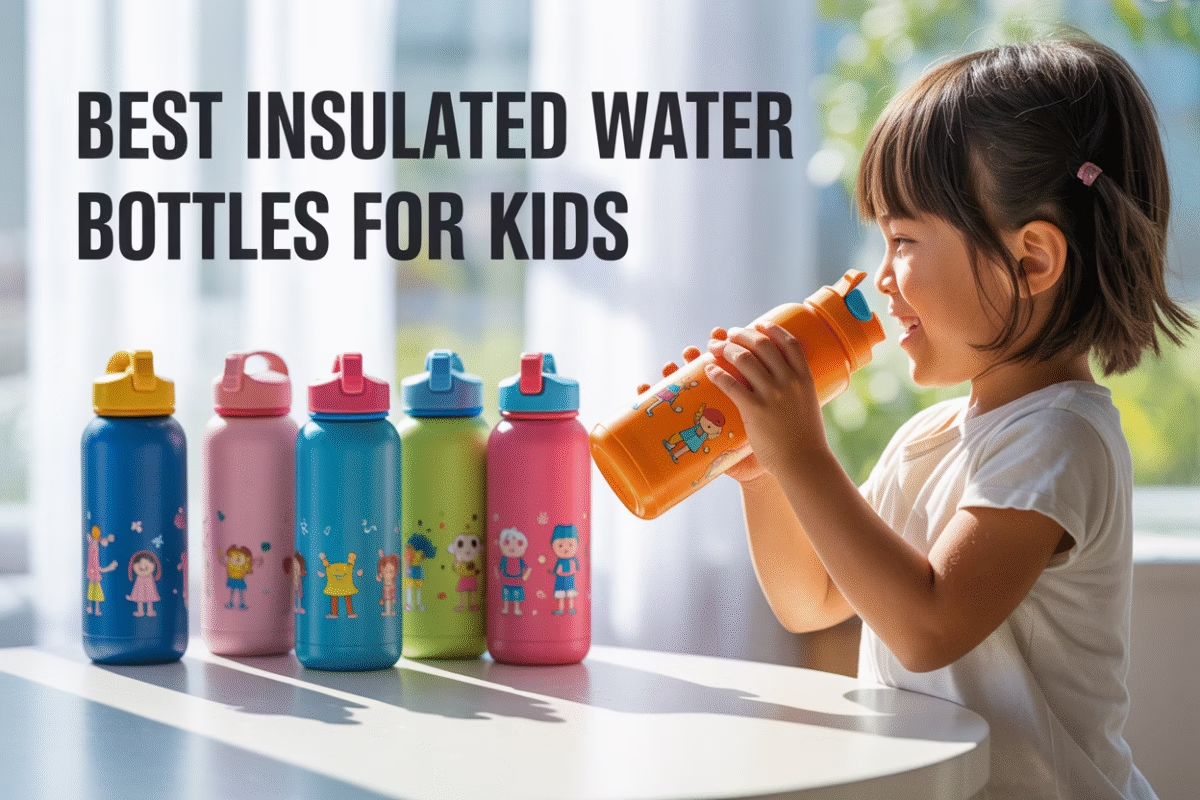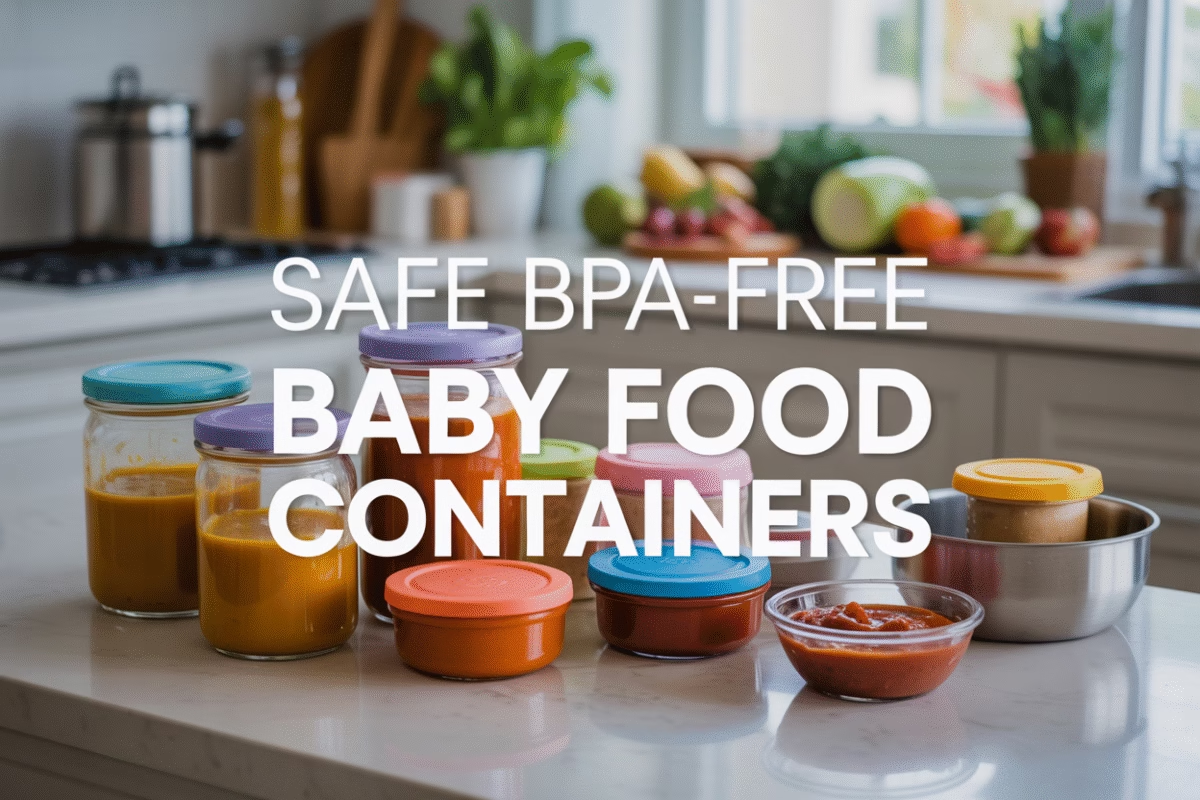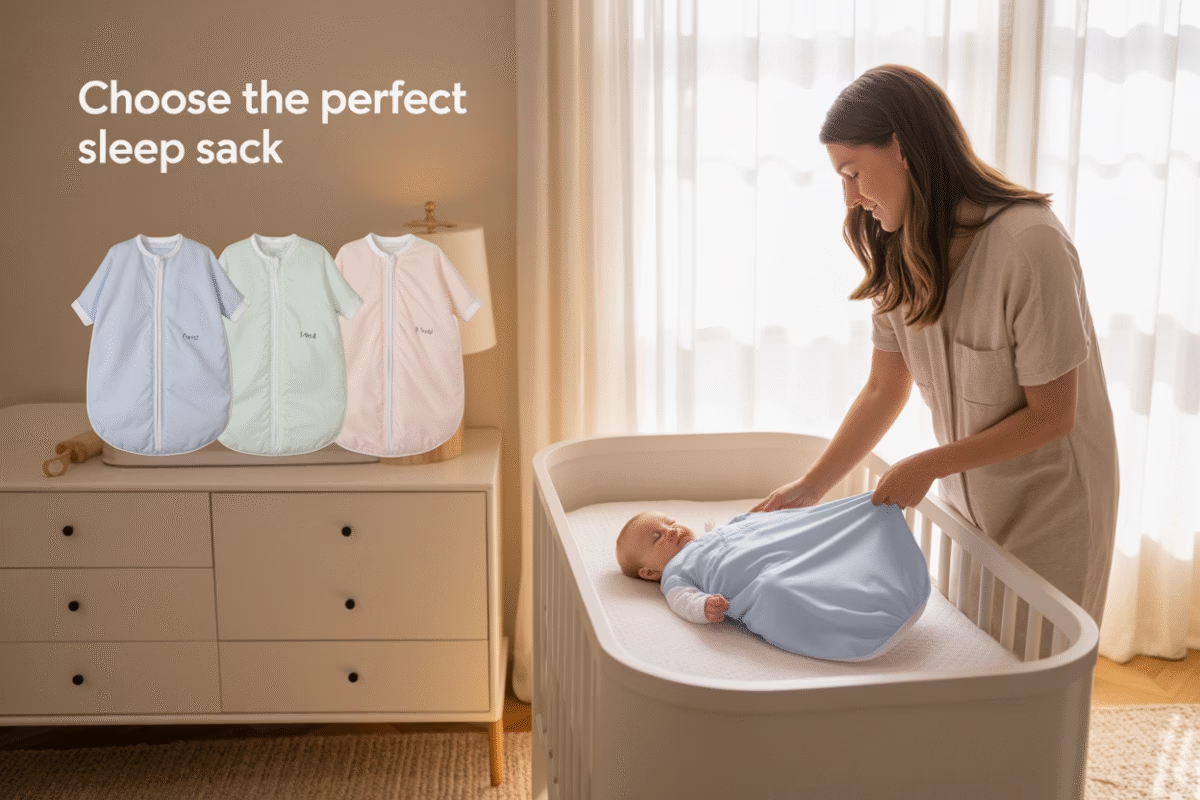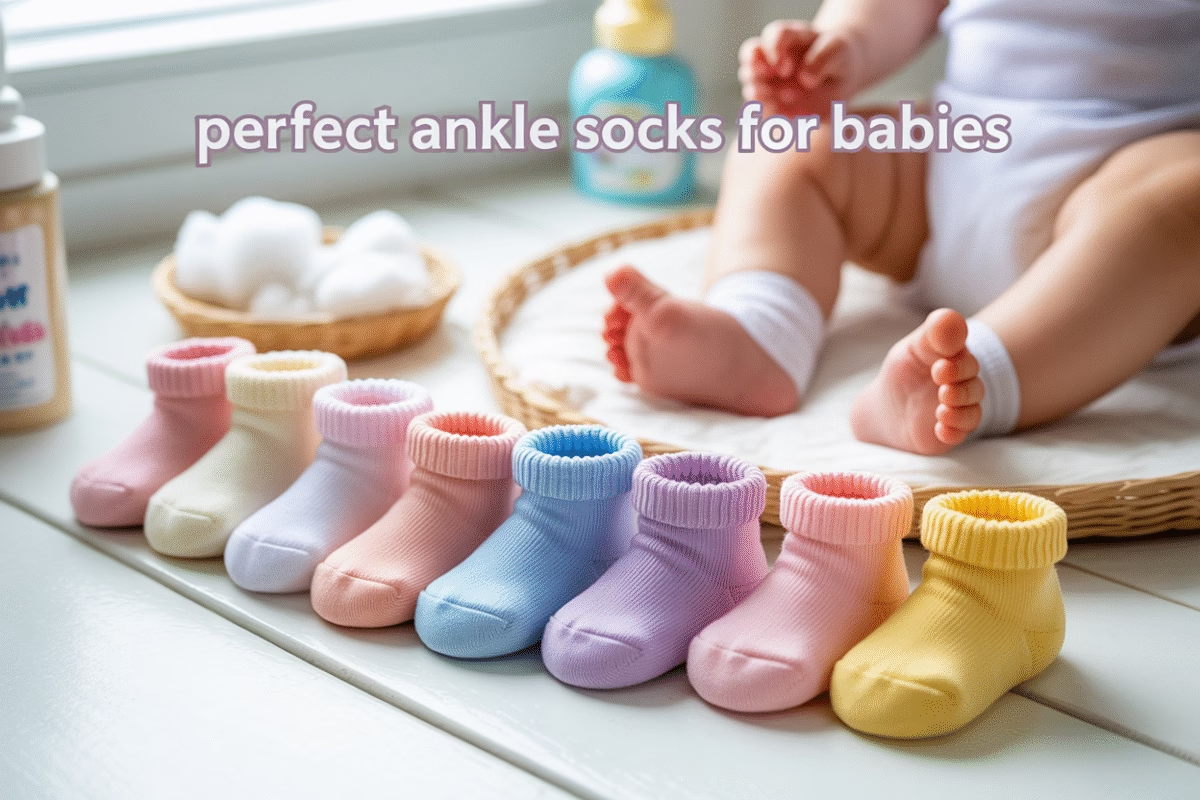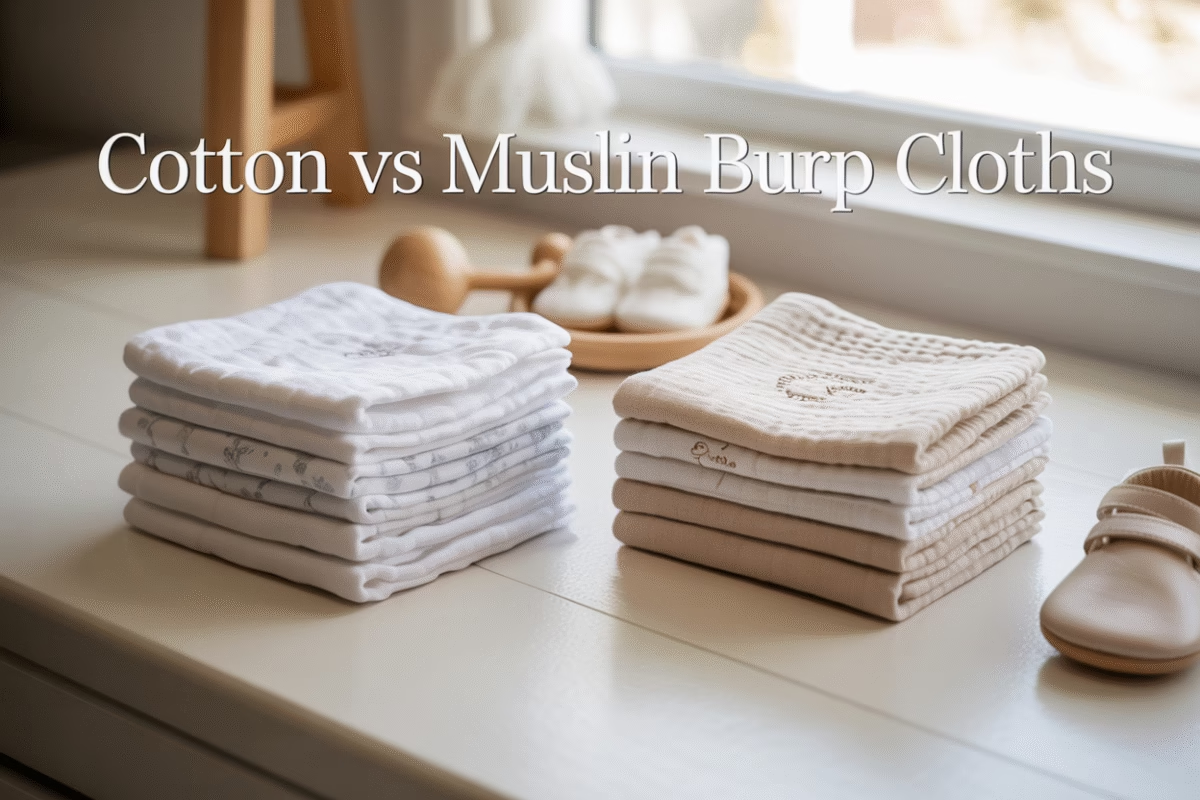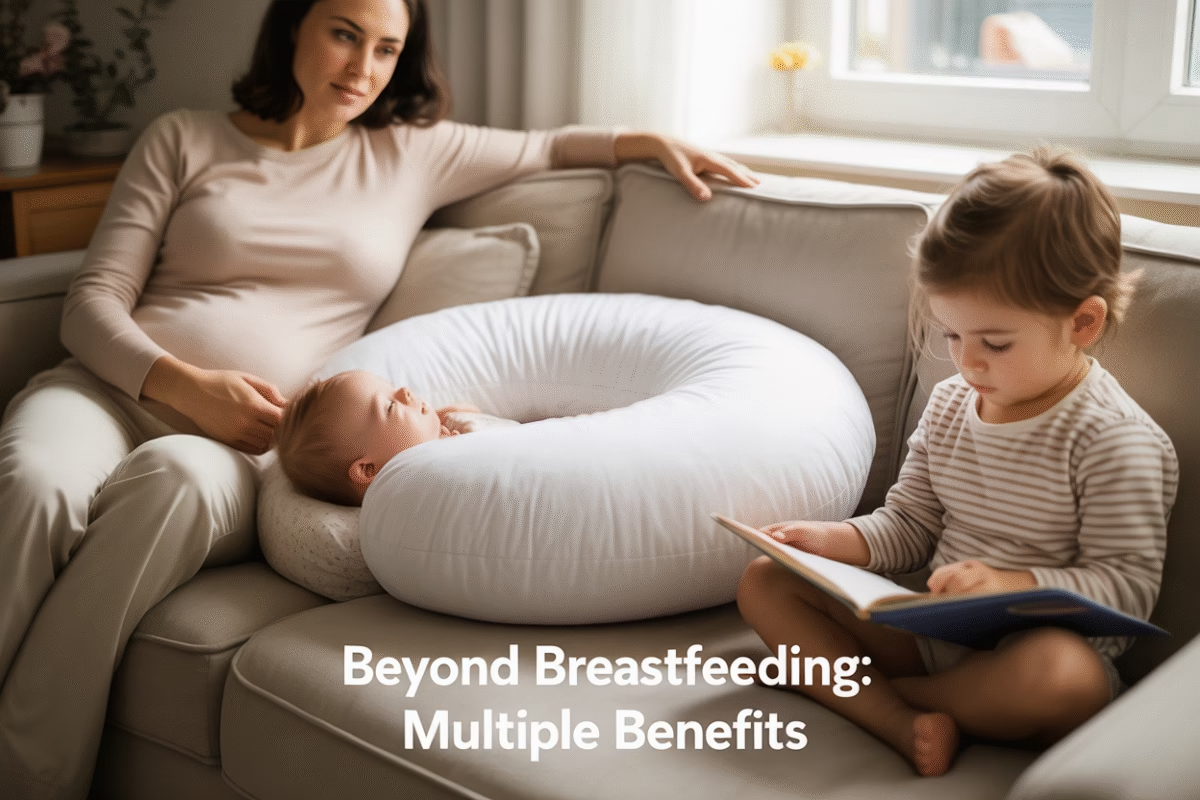Driving with a baby in the backseat can be nerve-wracking when you can’t see what they’re doing. A baby car mirror gives you that crucial visibility while keeping your eyes on the road.
This guide helps new parents and caregivers find the right car mirror for their specific needs. We’ll cover the essential features that make a car mirror safe and functional, explore the different types available on the market, and share practical installation tips to ensure your mirror stays securely in place.
Table of Contents
Why Baby Car Mirrors Are Essential for Safe Travel

Addressing the “backseat blindspot” safety concern: Baby Car Mirror
Ever tried to check on your baby in the back seat while driving? It’s practically impossible without some serious contortionist moves. That’s the “backseat blindspot” problem.
When your little one is in a rear-facing car seat (which is the safest position for babies), you literally can’t see them without turning around completely. And we all know turning around while driving is dangerous and illegal for good reason.
A baby car mirror fixes this problem instantly. Mounted on the back seat headrest facing your child, it reflects your baby’s image to your rearview mirror. Simple solution, massive safety upgrade.
Meeting your baby’s emotional needs during drives
Babies need connection. Those little faces light up when they see you, and long car rides can be scary when they feel alone.
With a car mirror, your baby can see your face in the reflection. That visual connection makes a huge difference in keeping them calm and secure. You can smile, make silly faces, or just let them know you’re there – all while keeping your eyes on the road.
Many parents report their babies are significantly less fussy during car rides after installing a mirror. Why? Because babies love faces, especially yours.
Reducing driver distraction and anxiety
Picture this: Your baby makes an unusual sound in the back seat. Without a mirror, what happens? You immediately stress out, wondering if everything’s okay. Maybe you’re tempted to reach back or turn around.
That anxiety and distraction are genuinely dangerous.
Legal considerations in some regions
While not universally mandated by law, some regions have begun including visibility of children in vehicles as part of their child safety regulations. Areas of Australia and parts of Europe have specific guidelines about maintaining visual contact with children in vehicles.
Even where not explicitly required, using a baby car mirror aligns with the general legal obligation for “proper care and control” of your vehicle. It’s a simple way to improve your driving safety that might have legal benefits, too.
Key Features to Look for in a Quality Baby Car Mirror

Mirror size and viewing angle capabilities
Ever driven with your neck craned at a weird angle trying to glimpse your baby? Not fun. The mirror size matters big time. You want something large enough to see your little one’s face clearly, but not so massive that it blocks your rear view.
Most quality mirrors measure between 7-11 inches diagonally. The sweet spot? Around 9 inches gives you that perfect balance.
But size isn’t everything (parents, you know what I’m talking about). The viewing angle is what makes or breaks a baby car mirror. Look for convex mirrors with a wide-angle view. They capture more of the back seat, so you can still see your baby even when they’ve somehow wiggled to the corner of their car seat.
Shatterproof design and crash-test ratings
Your baby’s safety isn’t something to compromise on. Period.
Any mirror worth considering should be 100% shatterproof. This means acrylic or plastic construction – not glass. When shopping, flip the mirror over and check the materials list.
Some premium mirrors go the extra mile with crash-test certifications. While not mandatory, these ratings show the manufacturer has put their product through rigorous safety testing.
Attachment security and stability: Baby Car Mirror
Nothing is more annoying than a mirror that keeps falling or shifting every time you hit a small bump. Seriously.
Quality mirrors offer multiple attachment points – usually straps that secure to the headrest in different ways. Double-strap systems tend to be more stable than single-strap options.
Pay attention to the buckles and clips, too. Cheap plastic clasps might save you a few bucks now, but will cost you sanity later when they break after two weeks.
Some newer models feature suction cup attachments for vehicles with unusual headrest configurations. These can work well, but check reviews carefully – not all suction systems are created equal.
Adjustability options for perfect positioning
The ability to adjust your baby mirror is non-negotiable. Why? Because every car, car seat, and baby position is different.
Look for mirrors with ball-joint construction or pivot points that allow for 360-degree rotation. This lets you fine-tune the angle until you get that perfect view of your munchkin.
The best mirrors maintain their position once set. Nothing worse than carefully adjusting it, then hitting one pothole and having to start over.
Some premium options offer remote adjustment capabilities – meaning you can tweak the angle without reaching back. Game changer for solo parents.
Distortion-free reflection clarity
What good is a big, secure mirror if the image is blurry or warped? You need crystal-clear visibility to check if your little one is sleeping peacefully or plotting their next escape attempt.
Avoid mirrors with wavy reflections or fisheye distortion. Quality mirrors use higher-grade acrylic that provides a true reflection.
Consider anti-glare features too. A mirror that catches sunlight at the wrong angle becomes completely useless. Some models include specialized coatings to minimize glare and reflection problems.
The background color matters as well. Mirrors with black or dark gray backing often provide better contrast and clearer images than those with lighter backgrounds.
Different Types of Baby Car Mirrors Available

A. Headrest-mounted mirrors
Ever tried checking on your little one while driving? Headrest-mounted mirrors are your best friend. These attach to the rear-seat headrest facing backward, giving you a clear view of your baby through your rearview mirror.
The beauty of headrest-mounted mirrors? They’re super versatile. Most models work with practically any car seat and headrest configuration. They typically feature adjustable straps that secure firmly around the headrest.
What parents love most is the wide-angle view these mirrors provide. You can see your baby’s face, hands, and even if they’ve dropped their favorite toy without turning around.
Installation is usually a breeze – wrap the straps, tighten, and adjust the angle. Done in under two minutes.
B. Window-attached options
Window-attached mirrors offer a different approach. These little lifesavers suction directly to your car window, providing a different viewing angle of your backseat passenger.
The major perk? No headrest needed! Perfect for cars with unusual headrest designs or removable headrests that make traditional mirrors impossible to install.
C. Sunshade-integrated models
Smart design alert! Sunshade-integrated mirrors combine two baby essentials in one clever package.
These mirrors attach like standard window sunshades but include a built-in mirror portion. They block harmful UV rays while still letting you keep an eye on your little one.
The downside? They generally offer a smaller mirror surface than dedicated mirrors. But for parents looking to minimize car clutter, they’re a space-saving dream.
D. Tech-enhanced mirrors with night vision or lights
Welcome to parenting in 2023! Tech-enhanced baby mirrors take basic monitoring to the next level.
These premium options include LED lighting for nighttime driving, allowing you to check on your baby without turning on overhead lights that might wake them.
Some high-end models even feature night vision technology or connect to your smartphone via Bluetooth. A few include temperature sensors to ensure your baby isn’t too hot or cold.
While pricier than basic mirrors, tech-enhanced options provide peace of mind that basic mirrors simply can’t match, especially for parents who frequently drive at night.
Installation Best Practices: Baby Car Mirror

Proper positioning for optimal visibility
Getting the perfect view of your little one isn’t rocket science, but it does require some thought. Aim to position your baby’s car mirror so you can see your baby’s face with just a glance in your rearview mirror. The sweet spot? Usually about 45 degrees from the back window, angled slightly downward.
Don’t mount it too low or too high. If it’s too low, you’ll constantly be looking down (hello, neck strain). Too high, and you might miss seeing if your baby has fallen asleep or dropped their pacifier.
Securing the mirror to prevent hazards
That cute mirror becomes a dangerous projectile if it’s not properly secured. Most mirrors come with straps designed to wrap around the headrest. Pull those straps tight—and I mean tight. Give it a good tug after installation. If it moves more than an inch in any direction, it’s not tight enough.
Never attach the mirror to parts of the vehicle that can move or adjust. And please, don’t try to “improve” the attachment with bungee cords or DIY solutions. The manufacturer’s attachment method has been tested for safety.
Testing stability before driving
Before hitting the road, do the “bump test.” Sit in the driver’s seat and slam your car door. Did the mirror shift? Push against the back of the passenger seat like an excited toddler might do. Still stable? Great.
Take your car over a few speed bumps at a reasonable speed. Check if the mirror stays put and maintains the correct angle. If it shifts even slightly, readjust before a longer trip.
Adjusting for different vehicles and car seats
SUVs need a different approach than sedans. In taller vehicles, you might need to angle the mirror more downward. For smaller cars, a more horizontal position often works better.
Infant carriers usually sit at a different angle than convertible car seats. When you switch car seat types, you’ll likely need to readjust your mirror positioning completely.
Top Baby Car Mirror Recommendations by Budget

Best affordable options under $20
Finding a quality baby car mirror doesn’t have to break the bank. Budget-friendly options pack impressive features while keeping your wallet happy.
The Munchkin Brica mirror offers wide-angle viewing and crash-tested durability for around $15. It attaches easily with dual straps and provides a clear view of your little one.
Another standout is the Jolly Jumper Driver’s Baby Mirror at about $18. Parents love its shatterproof design and simple installation that takes less than two minutes.
Don’t overlook the Diono Easy View mirror. Priced around $16, it features a pivot design that helps you find the perfect angle regardless of your car’s headrest configuration.
| Mirror | Price | Key Feature |
|---|---|---|
| Munchkin Brica | ~$15 | Wide-angle, crash-tested |
| Jolly Jumper | ~$18 | Shatterproof design |
| Diono Easy View | ~$16 | Adjustable pivot design |
Mid-range mirrors with enhanced features
Step up to the $20-40 range and you’ll get some pretty sweet upgrades.
The Britax Back Seat Mirror ($25) comes with an extra-large viewing area and a shatter-resistant surface. Its clever headrest attachment makes installation a breeze in most vehicles.
For about $30, the Brica Night Light mirror combines a clear reflection with a soft glow for night driving. Super helpful when you need to check on the baby during evening commutes without turning on bright interior lights.
The Skip Hop Tonal Mirror (~$35) offers both style and substance with its attractive design, distortion-free surface, and remote-controlled LED lighting.
Premium solutions for maximum safety and convenience
When nothing but the best will do, these premium options deliver peace of mind worth every penny.
The Summer Infant Baby Sight Digital Color Video Monitor ($80-100) combines a traditional mirror with a wireless camera system. The dash-mounted monitor gives you crystal-clear views day or night.
For tech-savvy parents, the Itomoro Baby Car Mirror with Camera ($70) connects to your smartphone via an app, allowing both front-seat passengers to monitor the baby simultaneously.
Maintaining and Using Your Baby Car Mirror Effectively

A. Cleaning and care instructions: Baby Car Mirror
Got a baby car mirror covered in tiny fingerprints? Welcome to parenthood! Keeping your mirror clean isn’t just about appearances—it’s about safety.
Most mirrors can be wiped down with a soft microfiber cloth. For stubborn smudges, a little water with mild soap works wonders. Just don’t spray cleaners directly onto the mirror—that can damage the backing or seep into electronic components if your mirror has them.
Skip the harsh chemicals and glass cleaners. They might leave streaks or residue that could be harmful if your curious little one somehow gets their hands on the mirror.
B. When to check on baby (and when not to): Baby Car Mirror
The mirror is there so you can peek at your baby—but not every second of your drive.
Good times to check:
- At red lights or stop signs
- When the baby makes unusual sounds
- After the baby wakes up from a nap
Bad times to check:
- While merging onto highways
- During heavy traffic
- In construction zones
- When navigating unfamiliar routes
Remember, your primary job is driving safely. That glance to see if your baby dropped their pacifier can wait until you’re stopped.
C. Replacing mirrors as your child grows
That infant mirror won’t cut it forever. As your little one grows, their needs (and what you need to see) change, too.
Around 12 months, when you switch to a forward-facing seat, you’ll need to completely rethink your mirror setup. That headrest-mounted mirror becomes obsolete, and you might instead rely on your rearview mirror.
For toddlers who’ve mastered the art of escape, consider upgrading to a larger mirror with a wider view so you can catch those tiny Houdinis in action.
D. Using mirrors with different car seat configurations: Baby Car Mirror
Different car seats demand different mirror setups:
- Rear-facing infant seats: Headrest-mounted mirrors work best, positioned to reflect the baby’s face.
- Convertible seats: May need adjustable-arm mirrors to get the right angle.
- Side-position installations: Require specially angled mirrors (not all mirrors work here).
- Center-position installations: Need mirrors with longer straps or extensions.
When installing in an SUV or minivan with third-row seating, you might need a larger mirror or even a secondary one for proper visibility.
For cars with built-in entertainment screens, position your mirror so it doesn’t block the screen—happy kids make for peaceful drives!

Navigating the world of baby car mirrors doesn’t have to be overwhelming. By focusing on essential features like shatterproof materials, secure attachment mechanisms, proper viewing angles, and distortion-free reflection, you can ensure your little one stays safe during every journey. Whether you choose a headrest-mounted mirror, a back-seat viewer, or a tech-enhanced option, proper installation and regular maintenance will maximize its effectiveness.
Remember, a quality baby car mirror isn’t just a convenience—it’s a crucial safety tool that provides peace of mind while driving.
Take time to research options within your budget, follow manufacturer guidelines for installation, and make checking on your baby through the mirror part of your regular driving routine.







